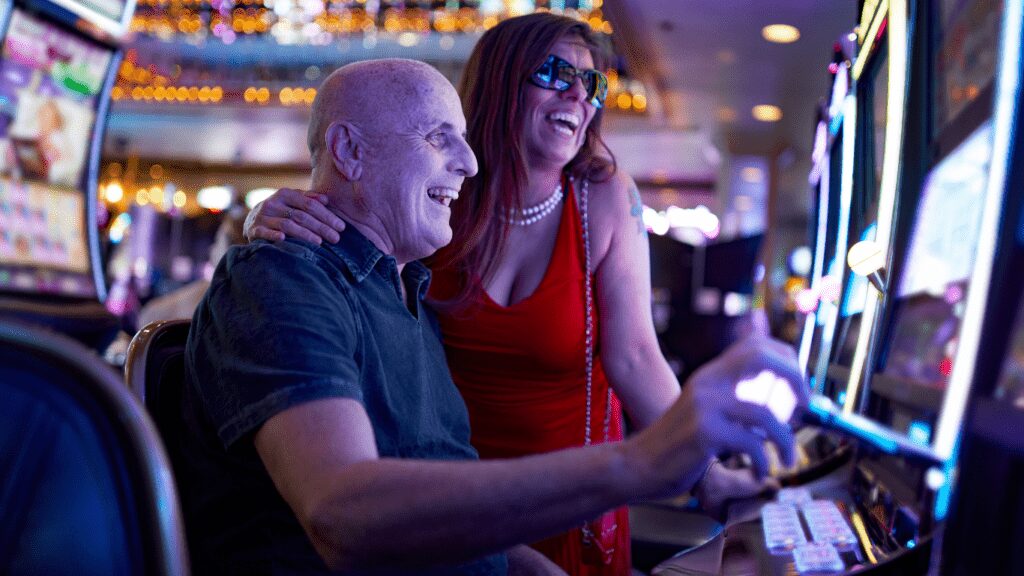I’ve always been fascinated by the magnetic pull of slot machines. There’s something about the flashing lights, enticing sounds, and endless themes that keeps players coming back for more. But have you ever wondered why these machines are so hard to resist? It’s not just luck or chance—it’s a carefully crafted experience designed to keep us hooked.
Understanding Slot Machine Addiction
Slot machine addiction stems from a combination of:
- psychological
- behavioral
- neurological factors
These machines use a reward system designed to exploit the brain’s dopamine response. Every spin activates this system, creating a cycle of anticipation and pleasure that reinforces continued play.
The intermittent reinforcement schedule makes slot machines especially addictive. Instead of providing rewards consistently, wins occur randomly. This unpredictability keeps players engaged, as they believe the next spin could result in a significant payout. The “near-miss” effect, where symbols almost align to form a win, further exaggerates this behavior, encouraging players to keep spinning.
Sound effects, such as celebratory chimes and jingles, amplify engagement. Winning sounds release dopamine, while losing spins are often silent or paired with neutral tones. This contrast intensifies the perceived value of wins. The use of rhythmic, repetitive audio also creates a hypnotic effect, making it harder to stop.
Themes and graphics immerse players, enhancing their emotional connection to the game. Machines are tailored with popular themes, including pop culture references, fantasy worlds, or historical settings, catering to unique player interests. High-quality animations and visual effects heighten this engagement, drawing players deeper into the experience.
Technological accessibility contributes to addiction. With digital platforms and mobile apps, slot machines are available 24/7. This constant access blurs boundaries between casual play and problematic use. Virtual coin systems, often used in online slots, detach players from real money, making losses feel less significant.
Understanding these mechanisms reveals how slot machines manipulate human psychology to foster addictive behaviors.
The Role Of Features In Slot Machine Appeal
Slot machine features are designed to maximize engagement and create a rewarding player experience. These elements manipulate emotions and behaviors, making them a core factor in their widespread appeal.
Random Rewards And Payout Schedules
The unpredictability of rewards keeps players engaged by tapping into psychological triggers. Randomized payout schedules, such as those based on a variable ratio, ensure wins occur at irregular intervals. This inconsistency reinforces hope, prompting repeated spins. For example, small wins scattered unpredictably maintain excitement while the chance of hitting a jackpot sustains motivation. Researchers underscore that the combination of randomness and reward activates dopamine release, enhancing the addictive potential.
Near-Misses And Losses Disguised As Wins
Slot machines often present near-misses, where symbols align closely without forming a winning combination. These near-misses simulate the feeling of almost winning, driving continued play as players believe success is imminent. Losses disguised as wins (LDWs) amplify this effect. In LDWs, machines still celebrate non-profitable outcomes, like receiving $0.50 on a $1 bet. Flashing lights and cheerful sounds reinforce the win illusion, even though a net loss occurred. Studies highlight near-misses and LDWs as critical in prolonging player engagement.
Bonus Games And Free Spins
Bonus games and free spins enhance the immersive experience, offering varied gameplay beyond routine spins. These features often trigger when specific symbol combinations appear, creating an element of surprise. For instance, free spins provide additional chances to win without extra bets, fostering a sense of value. Bonus games involve interactive mini-games or unique mechanics tied to machine themes, increasing entertainment value. By breaking monotony, these features keep players engaged longer and strengthen emotional investment in the game.
Themes And Visual Elements That Hook Players

Slot machines leverage visual design and thematic cohesion to captivate players. The combination of storytelling, colors, and nostalgic elements fosters emotional connections, creating a deeply engaging experience.
The Power Of Storytelling And Branding
- Storytelling transforms slot machines into immersive experiences.
- Developers integrate detailed narratives into game mechanics, making each spin feel like progress in a larger quest.
- Popular franchises, such as movie or TV show themes, tap into pre-existing fan bases.
- Slots based on “Game of Thrones” or “Jurassic Park” use familiar storylines and branding to entice fans.
- This approach encourages longer play sessions by merging entertainment with gambling.
Bright Colors And Flashing Lights
Bright visuals and dynamic light patterns draw attention and amplify excitement. Slot machines employ bold, vibrant colors like red, gold, and neon tones, which evoke energy and positivity. Flashing lights synced with sound effects celebrate wins, reinforcing the thrill of the game regardless of monetary value. These visual cues maintain player focus, creating a sensory-rich environment that heightens arousal and engagement.
Character-Based Themes And Nostalgia
Characters and nostalgic themes evoke personal connections that enhance emotional attachment. Slot machines featuring beloved characters from childhood cartoons, comic books, or classic films appeal to players’ memories and fond associations. For instance, slots themed around “Superman” or “The Wizard of Oz” combine familiarity with curiosity. This nostalgic pull elicits comfort and excitement, motivating players to continue exploring the game.
The Impact Of Sounds And Audio Cues
Sounds are integral to the immersive experience of slot machines, enhancing their addictive qualities. Each audio element is designed to evoke specific emotions and influence player behavior.
Winning Sounds And Their Psychological Effect
Celebratory sounds, like jingles or coin drop effects, amplify the excitement of winning. These sounds trigger dopamine release in the brain, reinforcing positive feelings and associating play with rewards. Even small wins are exaggerated through these audio cues, making them feel significant. For example, longer, more elaborate sounds often accompany jackpot wins, intensifying the perceived value of the moment.
Background Music To Sustain Engagement
Ambient music sets the mood and keeps players in an optimal emotional state. Fast-paced tracks create a sense of urgency and energy, while slower, calming melodies encourage prolonged play. Casinos strategically use music that evolves during gameplay, matching the tempo to spin pace or bonus rounds, ensuring players remain engaged. For instance, machines featuring themes like adventure or fantasy align their background music to complement the narrative, adding depth to the overall experience.
Sound Cues For Losses And Near-Victories
Neutral or muted tones accompany losses, reducing frustration and minimizing the emotional impact of failure. However, near-victory events, like aligning two jackpot symbols with a third one almost completing the win, often feature suspenseful sounds that build tension. This audio manipulation exploits the “near-miss” effect, making players feel they were close to a big payout, which encourages continuation. For instance, a rising chime that abruptly stops can create a sense of anticipation, keeping players hopeful.


 As co-founder of CasinoMastermindx. Cecilla Pricetalker leads the vision and strategy behind the platform’s tech-focused content. With a deep understanding of casino innovation, software engineering, and iGaming trends, she ensures every piece reflects accuracy, innovation, and integrity. Cecilla’s leadership and technical insight make CasinoMastermindx.com a trusted source for forward-thinking gaming intelligence.
As co-founder of CasinoMastermindx. Cecilla Pricetalker leads the vision and strategy behind the platform’s tech-focused content. With a deep understanding of casino innovation, software engineering, and iGaming trends, she ensures every piece reflects accuracy, innovation, and integrity. Cecilla’s leadership and technical insight make CasinoMastermindx.com a trusted source for forward-thinking gaming intelligence.
